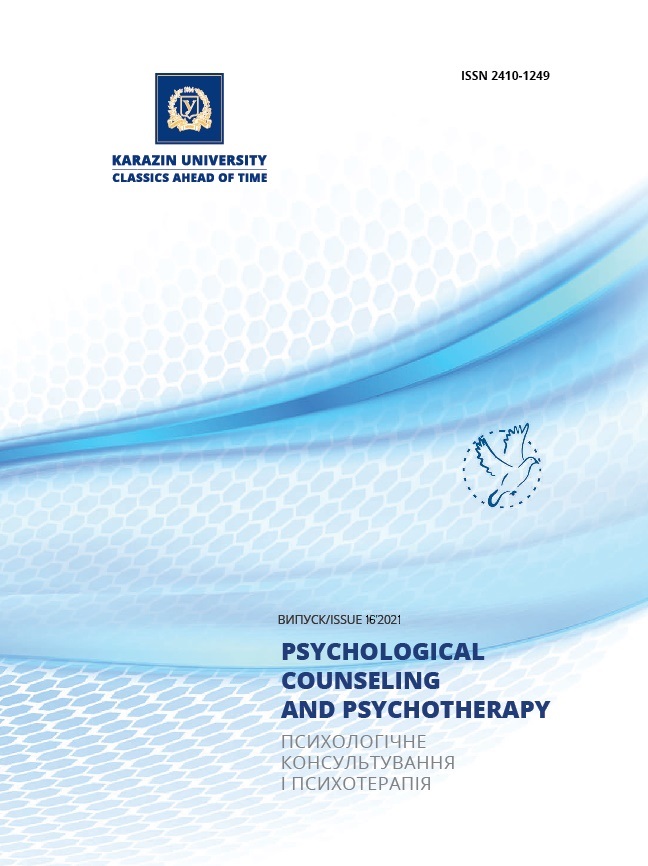Schoolchildren’s Competitiveness and Hubristic Motivation: the Dimensions and Assesment Posibilities
Abstract
Synopsis: According to results of theoretical analysis it was found that two competitive strategies are distinguished in children: interpersonal competitiveness and goal competitiveness. Interpersonal competitiveness (other-referenced competition) is considered as the striving to have better achievements than others and to win in interpersonal situations (games and activity) and to eSynopsis: According to results of theoretical analysis it was found that two competitive strategies are distinguished in children: interpersonal competitiveness and goal competitiveness. Interpersonal cnjoy the interpersonal competition and refers to hubristic striving for superiority. Goal competitiveness (task-oriented competition) is considered as the striving for excellence, goal achievement, and do one’s best and refers to hubristic striving for excellence and perfection. A Schoolchildren Competition Questionnaire was adapted. It consists of 17 items and characterized bi high rates of reliability and validity and describes three dimensions: 1) Other-referenced competition; 2) Task-oriented competition and 3) Maintenance of dominance hierarchy. It was revealed competitive strategies are connected with hubristic motivation in primary schoolchildren. Other-referenced competition characterizes schoolchildren with “Expressed dominance of pursuit for superiority”. The lowest level of is determined in children with “Low Hubristic Motivation”. The highest level of task-oriented competition characterizes schoolchildren with “Expressed Dominance of the pursuit of Excellence”. The lowest level of other-referenced competition and task-oriented competition is determined in children with “Low Hubristic Motivation”. Maintenance of dominance hierarchy characterizes schoolchildren with “Balanced Hubristic Motives”. The lowest level of maintenance of dominance is determined in children with “Moderate Dominance of the pursuit of Superiority”.Downloads
References
Axelrod R. (1984). The Evolution of Cooperation, Basic Books, New York, Ny, USA.
Charlesworth W. R. (1996). Co-operation and competition: contributions to an evolutionary and developmental model, International Journal of Behavioral Development, vol. 19, 1, 25–38.
Flanders J., Herman K.N., Paquette D. (2013). Rough-and-tumble play and the cooperation-competition dilemma: Evolutionary and developmental perspectives on the development of social competence, in Evolution, Early Experience and Human Development: from Research to Practice and Policy, D. Narvaez, J. Panksepp, A. Schore, and T. Gleason, Eds., Oxford University Press, New York, NY, USA.
Fomenko K.I. (2018). Hubristic motivation: phenomenology, structure, determination. Kharkiv: Disa-plus. (in Ukrainian).
Fomenko K.I. (2017). Psychodiagnostics of the motivational sphere of a primary school pupil. Visnuk KhNPU imeni H.S. Skovorody. Psichologia. 55, 280-295. (in Ukrainian).
Fomenko K.I. , Nadyon V., Diomidova N., Shukalova O. (2019). Hubristic motivation as a factor of the primary school’s pupils’ personal development. Visnuk KhNPU imeni H.S. Skovorody. Psichologia. 61, 150-168.
Griffin-Pierson S. (1990). The competitiveness questionnaire: a measure of two components of competitiveness. Measurement and Evaluation in Counseling and Development, 23, pp. 108–115.
Hawley P.H. (2003). Prosocial and coercive configurations of resource control in early adolescence: a case for the well-adapted Machiavellian, Merrill-Palmer Quarterly, 49, 3, 279–309.
LaFrenière P. J. and Charlesworth W. R. (1987). Effects of friendship and dominance status on preschooler’s resource utilization in a cooperative competitive paradigm, International Journal of Behavioral Development, 10, 345–358.
Paquette D., Gagnon M., Bouchard L., Bigras M., Schneider B.H. (2013). A new tool to explore children’s social competencies: the preschool competition questionnaire. Child Development Research, vol. Article ID 390256, 10 pages, https://doi.org/10.1155/2013/390256
Ryckman R. M., Hammer M., Kaczor L. M., and Gold J. A. (1990). Construction of a hypercompetitive attitude scale. Journal of Personality Assessment, 55, 3630–4639.
Ryckman R. M., Hammer M., Kaczor L. M., and Gold J. A. (1996). Construction of a personal development competitive attitude scale. Journal of Personality Assessment, 66, 2, 374–385.
Ryckman R. M., Libby C. R., Van den Borne B., Gold J. A., Lindner M. A. (1997). Values of hypercompetitive and personal development competitive individuals, Journal of Personality Assessment, 69, 2, 271–283.
Tassi F., Schneider B.H. (1997). Task-oriented versus other-referenced competition: differential implications for children’s peer relations. Journal of Applied Social Psychology, 27, 17, 1557–1580.
Tassi F., Schneider B. H., Richard J. F. (2001). Сompetitive behavior at school in relation to social competence and incompetence in middle childhood, Revue Internationale de Psychologie Sociale, 14, 2, 165–184.
Vaughn B. E., Vollenweider M., Bost K. K., Azria-Evans M. R., Snider J. B. (2003). Negative interactions and social competence for preschool children in two samples: reconsidering the interpretation of aggressive behavior for young children,” Merrill-Palmer Quarterly, 49, 3, 245 278.








